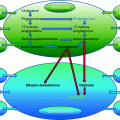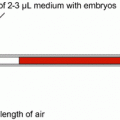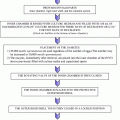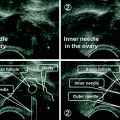Types
Definitions
Conduction of cycles (protocol)
Natural cycle
When IVF is carried out with oocytes collected from a woman’s ovary or ovaries in a spontaneous menstrual cycle without administration of any medication at any time during the cycle
The cycle is monitored by serial ultrasound scans ± serum LH and E2, usually starting from day 4–6 onwards. Urine LH test is commenced once the dominant follicle reaches ≥12 mm in diameter. Optimal timing of OC is determined by hormone levels and follicular diameter. Occurrence of endogenous LH surge necessitates OC within 24 h of the surge to prevent ovulation. Indomethacin may be added if there is a risk of premature ovulation. Luteal support is not necessary
Modified natural with hCG
“The use of hCG to
induce final oocyte maturation” in a natural cycle
Elective ‘trigger’ of final oocyte maturation by hCG, once the dominant follicle reaches ≥15 mm average diameter with satisfactory serum E2 levels. OC scheduled 35–36 h later. Triggering before endogenous LH surge reduces the need for emergency OC and the incidence of premature ovulation. Luteal support is optional
Modified natural cycles with addition of GnRH antagonist
‘The administration of GnRH antagonist to block the spontaneous LH surge with or without FSH or HMG as add-back therapy’
The cycle starts with natural selection of the dominant follicle. Low-dose FSH or HMG at 150 IU/day is started along with Cetrorelix (antagonist), once the leading follicle is 13–14 mm size and serum E2 is >500 pmol/l. The hCG trigger is planned when the follicle reaches >16 mm in average diameter with a satisfactory serum E2 level and OC follows 35–36 h later. The luteal phase support is administered
Other than the follicular size and serum estradiol (E2) levels, assessment of perifollicular blood flow by Doppler ultrasound also aids in managing a natural cycle IVF (Fig. 8.1). Good peak systolic blood flow in the perifollicular blood vessels in the pre-ovulatory period has been shown to be associated with probability of retrieving an oocyte and development of high-quality embryo [31]. Perifollicular blood flow velocity of ≥10 cm/second gave rise to 70% high-grade embryos, as opposed to only 14% when the flow was below 10 cm/s [32].
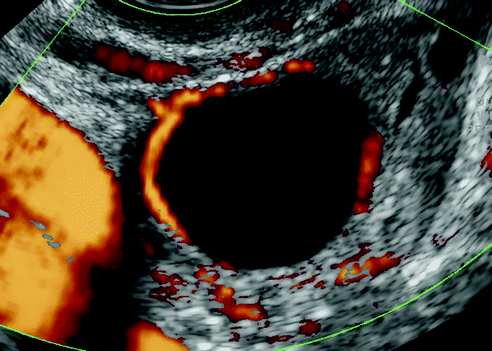

Fig. 8.1
Image by Doppler ultrasound for perifollicular blood flow
To increase efficiency, NC-IVF is usually offered as a multiple-cycle package. While availability of oocytes or embryo per OC is less, accumulating oocytes from multiple cycles and subsequent transfer of fresh and frozen embryos have been shown to improve the treatment outcome, when compared with multiple individual cycles (PRs: 34.4% vs. 16%) [33]. The opportunity of selecting the best embryo(s) and double ET, as opposed to usually SET in repeated fresh cycles, may explain this observation.
What Are the Indications of Natural IVF?
NC-IVF can be considered for anybody with regular menstrual cycle, whether on medical ground or on patient’s request. However, there are certain situations where it appears to be particularly useful. The following are the most common ones.
Women with Poor Ovarian Reserve (POR)
Women classified of having POR based on low antral follicle count (AFC) and/or low AMH, with or without elevated baseline FSH usually, have a poor prognosis in C-IVF, despite having high dose of ovarian stimulation. Traditionally, a day 3 FSH level is regarded as predictor of ovarian response, oocyte quality and IVF outcome, irrespective of women’s age [34]. In 2011, the European Society of Human Reproduction and Embryology (ESHRE) working group on ‘poor ovarian response’ organised a meeting at Bologna to form consensus on universally acceptable definitions of POR, which are now regarded as ‘Bologna criteria’ [35]. However, many IVF centres decline treatment to women over 40 years of age or with high day 3 FSH values. Recovery of fewer oocytes is recognised as an under-response for C-IVF, whereas it is normal and a very intended response in NC-IVF. Low oocyte yield following high gonadotropin stimulation is believed to be a result of follicular dysfunction or ageing ovary. In contrast, NC-IVF encourages only the most competent follicle(s) to develop, and therefore, its outcome is not much dependent on oocyte yield. Being naturally selected, quality of oocytes and embryo in NC-IVF is expected to be better [36]. On this theoretical background, NC-IVF could be a cost-effective solution for those who had failed treatment with high-stimulation dose C-IVF.
Earlier, a small uncontrolled case series of 32 women with POR (defined as basal FSH >12 iu/l) and ≥1 previous failed IVF with <6 retrieved oocytes reported poor treatment outcomes with MNC [37]. A cohort study (n = 164) found application of MN protocol in women with POR, as defined by Bologna criteria, resulted in low LBRs (7.4% per patient); the outcome was assessed against that of normal responders which was not a like-to-like comparison [38]. In contrast, another larger cohort study found no such difference in women ≤35 years age group (LBRs-normal responders: 35.05% vs. poor responders: 29.63% per ET) [6]. However, in women older than 35 years who were poor responders as well, NC-IVF led to inferior outcome compared to normal responders of the same age group. This finding was similar to that by Kedem et al. who found no benefit from NC-IVF among women aged between 35 and 43 years and also classified as ‘genuine’ poor responders (n = 111) according to Bologna criteria [39]. In contrast, a study of women aged 37–43 years and elevated serum FSH achieved 11.5% PR per cycle and 20.0% PR per ET by pure NC-intracytoplasmic sperm injection (ICSI) [40]. A more recent cohort control study that included women with POR according to Bologna criteria (n = 242) found significantly higher adjusted LBRs with MNC (7.5% vs. 3.1%; OR 4.01, 95% CI: 1.14–14.09) as compared to high-stimulation GnRH antagonist cycles [41]. Interestingly, more cycles were cancelled in the high-stimulation group mainly due to inadequate follicular growth (13.4% vs. 5.0%; p = 0.02) in this study, with no difference in cancellation rates due to premature ovulation. The reliability of these findings has been questioned (mainly on the principle of applying multivariate analysis), and re-emphasis was on the need for well-designed RCT [42].
Whether or not NC-IVF works better in women with POR in comparison with those with normal reserve, there is yet no evidence of superiority of C-IVF in this clinical setting, and rather, high stimulation is suggested to yield poorer outcomes [41]. Moreover, women often find intense ovarian stimulation regimen of C-IVF to be physically daunting, stressful and unrewardingly expensive [3]. NC-IVF being more patient-friendly and cost-effective, it could be a better option for these women.
Previous Poor Responders
There is no single strategy which is unquestionably beneficial after a suboptimal response with standard IVF treatment [43]. Earlier, several case reports, case series or small prospective trials on application of NC-IVF on previous poor responders revealed encouraging results [44–47]. As described above, the studies on women who had previous failed treatment and also had POR showed inconsistent results [37, 41]. The RCT (n = 215) that compared NC-IVF with ‘micro-dose flare’ protocol recruited women aged <43 years, with <4 dominant follicles in the previous treatment C-IVF cycle(s) [48]. It found similar PRs (per cycle: 6.1 vs. 6.9%; per ET: 14.9 vs. 10.1%) and a trend of higher implantation rates (14.9 vs. 5,5%; p = 0.05) with NC-IVF. A 3-cycle cumulative PRs/ET of 37.5% was achieved with negligible expense on medications [48]. Women dropped out from repeated C-IVF cycles more likely to find NC-IVF the way forward [3].
Advanced Women’s Age
The role of NC-IVF in treating women of advanced age has not yet been fully evaluated. Theoretically, older women are more likely to produce poor quality oocytes or aneuploid embryos and therefore may benefit from ‘natural selection’. As mentioned earlier, Shaulov et al. in their large uncontrolled study (n = 782 couples) found no significant decline in PR per ET (26.6% vs. 35.0%) in the older age group (>35 years) who had normal ovarian reserve and/or adequate response in the previous treatment cycle [6]. Cycle cancellation rates were also not significantly different. In this study, the PR in poor responder women of >35 years however was 6.25% per ET which was similar to those of Polyzos et al. (6.8% LBRs in women >40 years) [38]. Data are insufficient to compare relative effectiveness between NC-IVF and C-IVF in older age group. To date, the only RCT that compared NC-IVF (hCG only regimen) with one of GnRH agonist protocols (micro-dose flare) reported similar PRs per ET in 36–39-year age group (10% vs. 4%) and 40–43-year age group (8.0% vs. 9.7%) with a trend of higher implantation rates in favour of NC-IVF and minimal cost on medication [48]. Overall, the results are encouraging. Further work is needed to find the place of NC-IVF in women with advanced age.
Previous Conventional Stimulation Cycles with Poor Quality Embryos
High gonadotropin stimulation has been shown to generate higher proportion of poor quality of aneuploidy embryos [8, 9]. In the study by Arce et al., the number of blastocysts did not correlate with the FSH dose; however, the blastocyst–oocyte ratio and fertilisation rates declined significantly with the escalating gonadotropin dose [10]. By maintaining the follicular fluid hormone milieu (AMH, E2, androstenedione and LH) close to the physiological levels, NC-IVF improves fertilisation [12]. There was a paucity of comparative data between NC-IVF and failed C-IVF due to poor quality of embryos.
Contraindications to Ovarian Stimulation
Conventional ovarian stimulation possesses considerable risk in certain medical conditions including estrogen receptor-positive breast cancer, endometrial cancer or acute intermittent porphyria. Selective estrogen receptor modulators, particularly tamoxifen and aromatase inhibitors (e.g. letrozole), are being widely used in women with breast cancer requiring fertility preservation [49, 50]. In women with acute intermittent porphyria, even anti-estrogen may trigger disease flare up [51]. Pure NC-IVF could be an option for these patients undergoing fertility treatment. While multiple cycles of NC-IVF increase the number of oocytes or embryos to be cryo-preserved in cancer patients, very often the urgency of commencement of gonadotoxic chemotherapy or radiation does not allow the time for having repeated cycles: in vitro maturation (IVM) of oocytes from non-dominant follicles of a natural cycle could increase the number of available embryos [52]. Lim et al. reported a PR of 40.4% in a combined natural IVF+IVM cycles and 41.3% with IVM alone, as opposed to 37.8% with C-IVF among infertile couples undergoing treatment [53].
Women at Significant Risk of OHSS
Women with polycystic ovary are at risk of developing OHSS. Treatment of women who have already had severe OHSS is always a challenge. A number of very effective strategies to prevent OHSS have been described in recent years. GnRH agonist as an ovulation trigger followed by intense luteal phase support (by high dose of E2 and progesterone or low-dose luteal hCG) or freezing all embryos has made OHSS a rare event [54]. However, OHSS has recently been reported with agonist trigger and subsequent luteal-phase hCG [55] or even with freezing all embryos [56, 57]. NC-IVF with or without IVM may be an alternative option for high responder women who are at considerable risk of OHSS. Successful pregnancies can be achieved with this policy of NC-IVF and IVM [58]. However, a regular menstrual cycle is a prerequisite for NC-IVF. This option is not suitable for women with oligomenorrhoeic polycystic ovarian syndrome (PCOS). There is a large section of ovulatory PCO patients or high responders with regular periods who may benefit from NC-IVF-IVM treatment. Although theoretically reassuring, existing data are too small to determine the risk of OHSS and the cycle outcome with this strategy. At present, most of the IVF centres do not practice IVM routinely. With further experience of NC-IVF-IVM, it may come up as a safe and effective treatment for high responders.
Conclusion
NC-IVF provides a safe, low-cost and a patient-centred option for women wishing to avoid ovarian stimulation or where stimulation is medically contraindicated. NC-IVF should be regarded as a multiple-cycle approach, and cumulative success rates over 3 cycles (which can be done in successive cycles) are promising. The disadvantage of NC-IVF is that only one oocyte is obtained and that spontaneous ovulation can occur before the oocyte can be obtained. MNC-IVF overcomes this problem and with add-back FSH from the day of antagonist commencement can result in more than one oocytes being obtained. This strategy is particularly beneficial in poor prognosis patients with low ovarian reserve in whom standard IVF only adds cost to the treatment with no clear advantage in the final outcome. A simplified way of conducting the treatment cycles is physically and mentally less distressing to the patients and therefore appears to be more acceptable option to them. A 7-days-a-week dedicated service and expertise in advanced ultrasound assessment, e.g. follicular blood flow, are essential prerequisites to achieving an optimum outcome.
